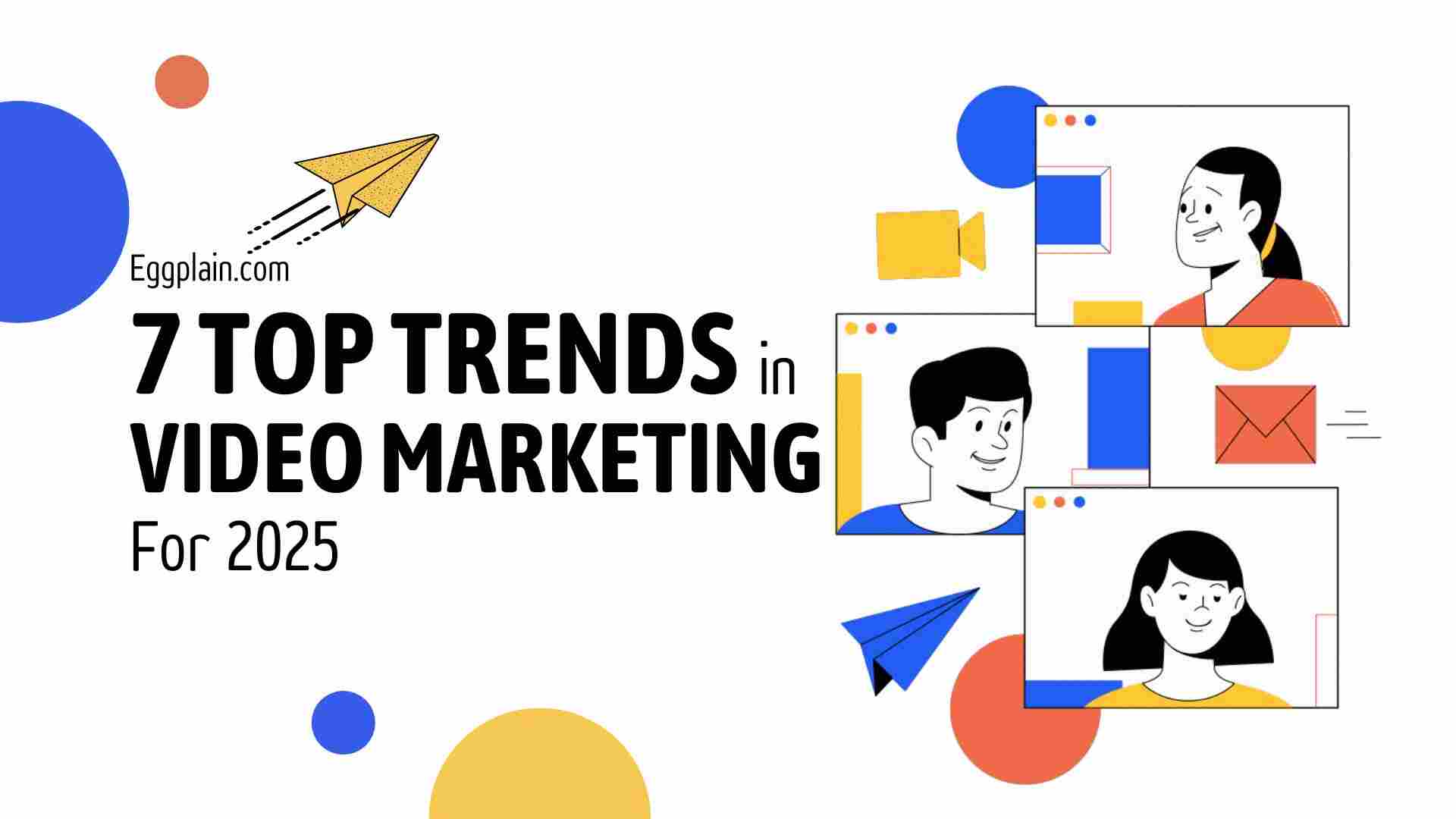
As we dive into Video Marketing Trends in 2025, it’s clear that this dynamic medium continues to evolve at an astonishing pace. Brands are increasingly leveraging innovative techniques to capture audience attention and drive engagement. From immersive experiences powered by augmented reality to the rise of short-form content that caters to on-the-go consumers, the landscape is rapidly changing. This year, personalization and authenticity will be more critical than ever, ensuring that videos resonate deeply with viewers.
Join us as we explore the top emerging trends in video marketing for 2025, highlighting innovative strategies such as augmented reality, short-form content, and the importance of personalization and authenticity, to equip brands with the insights needed to effectively engage their audiences in a rapidly evolving digital landscape.
1. The Rise of Short-Form Content in 2025
One of the most significant shifts in video marketing is the rise of short-form content. Platforms like TikTok, Instagram Reels, and YouTube Shorts have popularized quick, engaging videos that capture audience attention within seconds. According to a report from eMarketer, short-form videos are projected to grow significantly in 2025, driven by their popularity among younger audiences who prefer quick, easily digestible content.

Why Short-Form Content Works
The effectiveness of short-form content lies in its ability to deliver concise messages while maximizing engagement. Viewers are more likely to watch a 15 to 30-second video than a longer format, making it easier for brands to communicate their value propositions swiftly. Additionally, short-form content is often more shareable, increasing organic reach and engagement across social media platforms.
Best Practices for Short-Form Videos
To leverage the power of short-form content, brands should focus on the following best practices:
- Hook Viewers Immediately: The first few seconds are critical for grabbing attention. Use compelling visuals or intriguing questions to draw viewers in.
- Be Authentic: Authenticity resonates with audiences. Showcase genuine moments, behind-the-scenes footage, or user testimonials to build trust.
- Include a Clear Call to Action (CTA): Whether it’s to follow your page, visit your website, or purchase a product, a clear CTA helps guide viewer behavior after watching the video.
- Experiment with Different Formats: Try various content styles, such as tutorials, product showcases, or storytelling, to see what resonates best with your audience.
By embracing short-form content, brands can tap into the growing demand for quick, impactful videos that foster engagement and drive conversions.
2. Personalization and Targeting
In 2025, personalization in video marketing will be more crucial than ever. As consumers become increasingly accustomed to tailored experiences, brands must leverage data to create personalized video content that speaks directly to their audience’s needs and preferences.
The Importance of Personalization
Personalized videos can significantly improve engagement rates. According to Wyzowl, personalized video content can lead to a 35% increase in viewer engagement. By using data-driven insights, brands can segment their audiences based on demographics, interests, and behaviors, allowing for more targeted messaging.
Techniques for Personalizing Video Content
Here are some effective techniques for creating personalized video content:
- Dynamic Video Content: Use technology to create videos that change based on viewer data. For instance, brands can tailor messages based on user location, preferences, or purchase history.
- Personalized Recommendations: Incorporate product recommendations within videos based on viewer behavior. For example, an e-commerce brand could suggest items similar to what a customer has previously viewed.
- Interactive Videos: Allow viewers to make choices that influence the video’s direction. This interactive experience can create a sense of involvement and increase viewer satisfaction.
- Segmented Email Campaigns: Include personalized video content in email marketing campaigns. Personalized greetings or tailored content based on user data can enhance engagement and conversion rates.
By focusing on personalization, brands can create meaningful connections with their audiences, resulting in higher engagement and loyalty.
3. Augmented Reality (AR) and Virtual Reality (VR) Integration
As technology continues to advance, augmented reality (AR) and virtual reality (VR) are becoming integral components of video marketing. These technologies enhance user experiences by creating immersive environments that engage viewers in unique ways.
The Benefits of AR and VR in Marketing
AR and VR provide brands with the opportunity to showcase products and services in interactive formats. According to Statista, the global AR and VR market is expected to reach $209.2 billion by 2022, demonstrating its growing importance in marketing strategies.

Examples of Successful AR and VR Campaigns
- IKEA Place App: IKEA’s AR app allows users to visualize furniture in their own homes before making a purchase. This innovative approach enhances the shopping experience and reduces returns.
- Sephora Virtual Artist: Sephora’s AR feature lets customers virtually try on makeup products, helping them make informed decisions and increasing the likelihood of purchase.
- Nike’s VR Experiences: Nike has utilized VR technology to create immersive experiences at their flagship stores, allowing customers to engage with products in a memorable way.
Implementing AR and VR in Your Strategy
To effectively integrate AR and VR into video marketing strategies, consider the following steps:
- Identify Audience Needs: Understand what your audience values and how AR or VR can enhance their experience.
- Invest in Technology: Consider the tools and platforms necessary to create high-quality AR and VR experiences.
- Measure Engagement: Track metrics to assess the effectiveness of AR and VR campaigns. Analyze viewer engagement, feedback, and conversion rates to refine future strategies.
By embracing AR and VR technologies, brands can create immersive and memorable experiences that stand out in a crowded marketplace.
4. Live Streaming and Real-Time Engagement
Live streaming continues to gain momentum in video marketing, allowing brands to engage with their audiences in real-time. This trend enables businesses to foster a sense of community and connection with their viewers, leading to increased trust and loyalty.
The Growth of Live Streaming
According to a report from StreamElements, live streaming viewership has surged in recent years, with platforms like Facebook Live, Instagram Live, and Twitch leading the charge. The immediacy of live streaming creates an engaging experience that pre-recorded videos often lack.
Benefits of Live Streaming
- Authenticity: Live videos convey authenticity, as viewers can see unedited, real-time interactions. This transparency helps build trust and relatability.
- Direct Engagement: Brands can interact with viewers through comments and questions, creating a two-way conversation that enhances engagement.
- Event Promotion: Live streaming is an effective way to promote events, product launches, or Q&A sessions, allowing brands to reach a broader audience.
Best Practices for Live Streaming
To maximize the impact of live streaming, consider these best practices:
- Promote Ahead of Time: Announce your live stream in advance to build anticipation and encourage viewers to tune in.
- Engage with Viewers: Respond to comments and questions during the stream to foster engagement and create a sense of community.
- Provide Value: Ensure that your live stream offers valuable content, whether it’s insights, entertainment, or exclusive offers.
- Analyze Performance: After the stream, analyze metrics such as viewer retention and engagement rates to refine future live streaming strategies.
By embracing live streaming, brands can create interactive and engaging experiences that resonate with their audiences.
5. User-Generated Content (UGC)
User-generated content (UGC) is another powerful trend in video marketing for 2025. By leveraging content created by customers, brands can foster community engagement and authenticity.

The Value of UGC
According to Nielsen, 92% of consumers trust organic, user-generated content more than traditional advertising. UGC enhances brand credibility and fosters a sense of community, making it a valuable asset in video marketing strategies.
Encouraging User-Generated Content
Brands can encourage UGC by:
- Creating Hashtag Campaigns: Encourage customers to share their experiences using a specific hashtag. This creates a sense of community and makes it easy for brands to curate content.
- Contests and Challenges: Host contests or challenges that incentivize users to create and share videos. For example, a fitness brand could encourage users to share their workout routines using its products.
- Featuring UGC in Marketing: Showcase user-generated videos on your website, social media, or advertisements. This not only highlights satisfied customers but also encourages others to contribute their content.
Benefits of Incorporating UGC
- Increased Authenticity: UGC adds authenticity to marketing efforts, as it reflects genuine customer experiences.
- Cost-Effective Marketing: Leveraging UGC can reduce content creation costs, allowing brands to allocate resources elsewhere.
- Enhanced Community Engagement: By involving customers in the content creation process, brands can strengthen their community and foster loyalty.
By embracing UGC, brands can create a vibrant and engaged community that enhances their video marketing efforts.
6. Data-Driven Video Marketing
In 2025, data-driven strategies will be essential for optimizing video marketing efforts. By analyzing viewer behavior and preferences, brands can create more effective and targeted video content.
The Importance of Data in Video Marketing
Data allows brands to understand their audiences better, enabling them to tailor content that resonates. According to HubSpot, 70% of marketers believe that data-driven marketing is critical to their success.
Key Metrics to Track
To maximize the effectiveness of video marketing strategies, brands should track the following key metrics:
- View Count: Monitor how many times a video has been viewed to assess overall reach.
- Engagement Rate: Track likes, shares, comments, and watch time to gauge audience interaction and interest.
- Conversion Rate: Measure how many viewers take action after watching a video, such as making a purchase or signing up for a newsletter.
- Audience Retention: Analyze how long viewers stay engaged with a video to identify which parts resonate most.
7. Sustainable and Ethical Marketing Practices
In 2025, consumers are increasingly prioritizing brands that align with their values, particularly in terms of sustainability and ethical business practices. Video marketing is no exception to this trend. With growing awareness of climate change, social justice, and environmental impact, brands are being held to higher standards, and their video content must reflect these values to resonate with today’s conscious consumers.
The Importance of Sustainability in Video Marketing
A study by Nielsen found that 81% of global consumers feel strongly that companies should help improve the environment. This statistic highlights the importance of sustainability in marketing strategies. Consumers now expect brands to take meaningful action on social and environmental issues, and video marketing is an excellent medium for showcasing these efforts.
How Brands Can Adopt Sustainable Video Marketing Practices
- Showcase Sustainable Initiatives: Use video content to highlight your brand’s sustainable efforts, such as responsible sourcing, reducing waste, or supporting environmental causes. For example, a behind-the-scenes video of how a company has shifted to eco-friendly manufacturing processes can build credibility with consumers.
- Use Eco-Friendly Production Methods: Video production can have a significant environmental impact due to the resources required for filming, editing, and distribution. By adopting sustainable production methods—such as reducing energy consumption, using renewable energy, or minimizing travel for shoots—brands can lower their carbon footprint and appeal to eco-conscious audiences.
- Promote Ethical and Transparent Storytelling: Consumers value honesty and transparency in marketing. Brands that are open about their supply chains, labor practices, and sustainability goals are more likely to earn the trust of their viewers. Create videos that tell authentic stories about your brand’s ethical practices, such as supporting fair trade or donating to social causes.
- Minimize Digital Waste: Digital media has an environmental footprint, with data storage and transmission contributing to energy use. Brands can reduce digital waste by optimizing video files to lower data requirements, using content delivery networks (CDNs) that focus on efficiency, and encouraging responsible consumption of media.
- Highlight Social Responsibility: Beyond environmental sustainability, ethical video marketing also includes showcasing efforts in social responsibility. This can include promoting diversity and inclusion, supporting local communities, or advocating for social causes through video campaigns. Brands that use their platform to stand for positive change tend to resonate better with modern consumers.
Examples of Brands Excelling in Sustainable Video Marketing
- Patagonia: Known for its strong environmental stance, Patagonia consistently creates video content that highlights its efforts in sustainable sourcing, repairing and reusing products, and activism for environmental conservation.
- TOMS Shoes: Through video storytelling, TOMS promotes its “One for One” initiative, where for every pair of shoes purchased, the company donates to people in need. This type of ethical marketing resonates deeply with socially conscious consumers.
- Unilever’s Sustainable Living Plan: Unilever uses video to communicate its commitment to sustainability, including efforts to reduce waste, lower emissions, and enhance livelihoods across its global supply chain.
The Impact of Ethical Video Marketing
When done correctly, sustainable and ethical video marketing not only enhances a brand’s reputation but also drives long-term loyalty. Consumers are more likely to support and advocate for brands that share their values. Furthermore, ethical marketing fosters a sense of purpose for both the brand and its audience, creating a deeper emotional connection that goes beyond the product or service being sold.
Bonus Tips: Hire Professional
If you want to ensure your video is of the highest quality, consider hiring professional animators. Experienced professionals can bring your vision to life, helping you achieve the perfect balance between creativity and clarity.
When deciding whether to outsource video creation or handle it in-house, consider your resources. Outsourcing can give you access to skilled animators and save time, while creating videos in-house allows for more control and potentially lower costs if you have the right talent on hand.
Eggplain is team of experienced animators with nearly a decade of expertise in collage animations, animated explainer videos, 2D, 3D, and motion graphics. Since 2015, we have positioned ourselves as one of the world’s top animation production companies, consistently delivering outstanding results.
With a portfolio comprising 400+ videos, we have had the privilege of collaborating with well-known brands you you see every day, such as Canva, InBody, Ridgid, Delta Electronics, and United Overseas Bank (UOB).

Book Your Free Consultation!
No payment or credit card information required.
Conclusion
As we look ahead to 2025, the world of video marketing is brimming with opportunities for brands to engage their audience in innovative ways. By embracing emerging trends such as short-form content, personalization, AR/VR integration, live streaming, UGC, data-driven strategies, and sustainable practices, businesses can stay ahead of the curve and create meaningful connections with their consumers.
The key to successful video marketing lies in understanding the evolving preferences of your audience and adapting your strategies accordingly. As technology continues to advance and consumer expectations shift, brands that prioritize creativity, authenticity, and engagement will thrive in the competitive landscape of video marketing in 2025. By staying attuned to these trends, marketers can harness the full potential of video to drive brand awareness, loyalty, and conversions.
FAQ: Emerging Trends in Video Marketing 2025
1. What is the biggest trend in video marketing for 2025?
The rise of short-form content continues to dominate in 2025, with platforms like TikTok and Instagram Reels driving the popularity of quick, engaging videos that capture audience attention in just seconds.
2. How can personalization improve my video marketing strategy?
Personalized video content allows you to tailor messages to specific audience segments, improving engagement and conversion rates. By using data-driven insights, you can create more relevant and impactful content that resonates with viewers.
3. What are the benefits of using AR and VR in video marketing?
Augmented Reality (AR) and Virtual Reality (VR) create immersive experiences that enhance user engagement. Brands can use these technologies to showcase products in interactive formats, making the experience more memorable and impactful.
4. Why is live streaming important in 2025?
Live streaming fosters real-time engagement and allows brands to connect authentically with their audience. It’s a powerful way to promote events, launch products, or hold interactive Q&A sessions, building trust and community.
5. How can user-generated content (UGC) benefit my brand?
User-generated content adds authenticity to your marketing efforts by showcasing real customer experiences. It builds trust, encourages community involvement, and can be a cost-effective way to source engaging content for your brand.


